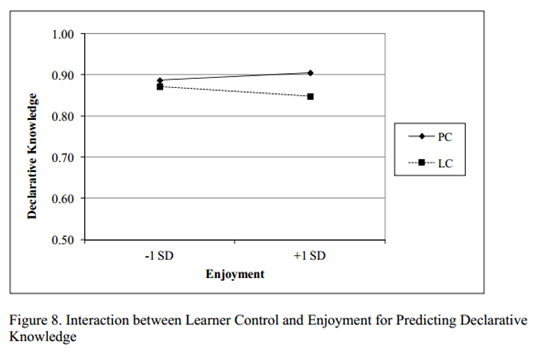Difference between revisions of "Flexible Learning"
From Learning and training wiki
| Line 17: | Line 17: | ||
'''The five myths''' | '''The five myths''' | ||
| − | |||
Moreover, the term flexible learning is loaded with a series of myths regarding its popular understanding. Five of them can be identified: | Moreover, the term flexible learning is loaded with a series of myths regarding its popular understanding. Five of them can be identified: | ||
Revision as of 16:59, 13 August 2013
| According to Lundin, flexible learning is an idealized state where there is a mixture of educational philosophy, pedagogical strategies, delivery modalities and administrative structures which allows students to choose according to their learning needs, styles and circumstances. In principle, flexible learning approaches may be applied to any subject; however, an accurate analysis of the demands of the learner and of the viability of this approach is highly recommended.
The term “flexible learning” is itself flexible and encloses several aspects; however, there seems to be a consensus in at least the following points: • Flexible learning implies that processes of teaching and learning can be liberated from the constraints of time and place. • Flexible learning provides learners with a choice about how, where and when the learning process will take place. Furthermore, the term stands in opposition to linear learning (also called traditional learning ) and it is often related to student-centeredness in educational practices (or learner-controlled learning environments ). Although it is mainly used to encompass distance learning and open learning, especially in the context of higher education, its scope may be much wider, once it may also be found in face to face contexts and different age groups. In addition you may consult these two useful tables by various authors, which compile further characteristics of flexible learning:
The five myths Moreover, the term flexible learning is loaded with a series of myths regarding its popular understanding. Five of them can be identified:
It is characterized by the natural neural cognitive activities responsible for learning processes performed in the sub-conscious level; it is the ‘brain behavior’. Examples from intrinsic learning behaviors are: • information processing and association with prior knowledge – memory;[1] • learning from mistakes and failure;[2] • innate curiosity;[3] Each of this operations, are performed by the brain within various learning styles sets, depending on the individual’s personal inclination. See also: cognitivism
Employed in parallel with the above-mentioned activities, the active learning behavior refers to the actions performed by the individual in the conscious level aiming the mastery of the task to be learned. The latter is the most frequently addressed in the literature on learning behavior and encompasses the following practices: • self-discipline (through self-conditioning); • self-organizing, establishing a strategy; • self-studying, self-reflection; • self-motivation[4]; • engagement; • concentration, focus, mindfulness; • transformative learning/collaborative learning (widening one’s perspective): exchange of ideas, seeking feedback, sharing information, seeking for help, talking about errors, collaboration, argumentation, discussion; • learn by doing: to put the knowledge in practice, problem solving; • creating a proper environment for learning activities, learn in a proper environment; • provide oneself with proper sleep;
An alternative approach refers to the outer stimulus ‘pro-learning’. It consists in the way the mentor (eg. the boss, supervisor, trainer, instructor, etc.) acts in favour of the learning performance of his pupil. For example, challenging the learner’s previous knowledge and conditioning his behavior by making use of either negative reinforcement (punishment), or positive reinforcement (reward, compliment), the latter enhancing motivation. See also: behaviorism |
| Below you have a list of resources that provide additional information on different aspects of Learning Behavior. |
| Link | Content |
|---|---|
| Learning from mistakes is harder than we think | Annie Murphy Paul tells us about different ways of learning from our mistakes. |
| Learning from brilliant mistakes | An interesting article that will teach how to worship your mistakes. |
| Why do some people learn faster? | A new study unveils the complexity of brain's learning behavior. |
| How to stimulate curiosy | Three ways to stimulates your curiosity. |
| Can ‘Mindfulness’ Really Help You Focus? | A study assessing the performance of the participants with or without a session of meditation before the application of the test. |
| Document | Content |
|---|---|
| MindMap Learning Behavior | Visualize "Learning Behavior". PS: the hyperlinks are not available on the image, but all the sources can be found in 'Web Resources' and 'References'. |
References
- ↑ Okano, H., Hirano, T., & Balaban, E. (2000). From the Academy Learning and memory, 97(23), 12403–12404.
 PDF
PDF
- ↑ http://scienceblogs.com/cortex/2009/10/22/learning-from-mistakes/
- ↑ Loewenstein, G. (1994). The Psychology of Curiosity: A Review and Reinterpretation. Psychological Bulletin, 116(1), 75–98.
 PDF
PDF
- ↑ http://www.education.com/reference/article/motivation-affects-learning-behavior/
